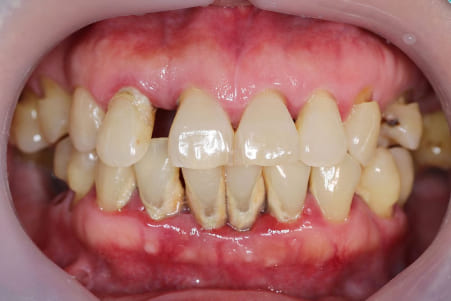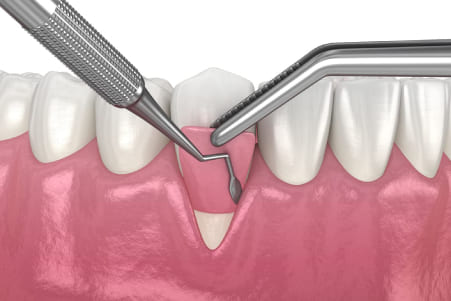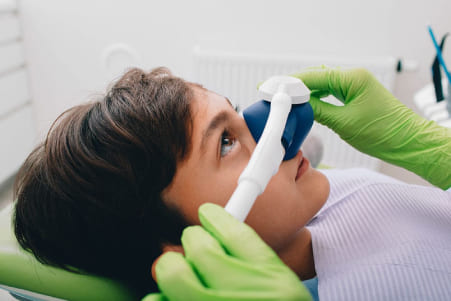- Mon - Sat, 10:30 AM to 07:00 PM
- + 91 98947 99699
- admin@mesodental.in
When plaque and calculus build up on your teeth, bacteria can get trapped, resulting in gum disease. For mild cases, improving your oral hygiene routine and coming for regular scaling and polishing can help to alleviate the condition. However, if your condition is severe, your dentist may suggest gum treatment or even gum surgery.
Healthy gums begin with healthy habits at home! Here are some tips you can follow to keep your gums in the pink of health.
On top of these daily habits, you should also visit your dentist every 6 months for a routine check-up and cleaning.


Gum infection (periodontitis) causes a pocket to form between the roots’ surface and the gums. Plaque and calculus get stuck inside these pockets, causing further infection and gum loss.
Healthy gums should be pink and firm. If you have gum disease, you may notice the following signs instead:

Root planing is a non-surgical form of deep cleaning that involves thorough removal of all plaque, bacterial toxins and tartar deposits from your teeth ...Read More
A gum abscess occurs when the space between the teeth and the gums is infected, resulting in pus collecting there and causing swelling. Incision ...Read More
With severe periodontitis, plaque and calculus get trapped deep below the pockets between the roots’ surface and your gums. This can eventually cause a ...Read More
An open flap debridement surgery allows the dentist to reach deeper below the roots’ surface to eliminate harmful plaque and calculus (tartar). The gums ...Read More
Strong teeth are built on strong gums. Periodontal disease infects the gum causing inflammation, redness, swelling and loss of bone around surrounding teeth. There are several types of gum surgery, depending on the severity of your gum disease and the damage done. Here are the types of gum surgery:


For many, dental procedures have always been associated with pain. Pain is one of the main reasons why many patients avoid going to the dentist. At Meso Dental, our dental experts are equipped to provide a pain-free experience with various anesthetist options.
Before the procedure, you will be given an anaesthetic to ensure your comfort. This anaesthetic typically leaves your lips, teeth and tongue feeling numb after the appointment. For this reason, you should avoid chewing for 2 hours following the surgery, or until the numbness has completely worn off. In some cases, you may also experience numbness on one side of the face, and it will take about 3-4 hours to regain your muscles control. You may experience pain, swelling, or discomfort for several days, which can be treated with painkillers. You will also be given antibiotics to reduce any risk of infection. If symptoms of pain or discomfort persist or worsen, please contact the clinic immediately.
After your treatment, avoid hot liquids and foods. Soft food and cool liquids should be eaten on the day of surgery. You may return to a normal diet 24 hours after the procedure, but please avoid hard foods for a week as these could irritate the wound. Please also refrain from smoking as it will slow down the healing process.
It is common to have slight bleeding from the surgical site for 1-2 days after surgery. Replace the gauze on the bleeding area as needed every 30-45 minutes and bite on the gauze firmly. Keeping your head elevated with pillows can also help to control bleeding. However, if bleeding continues or increases, please call our clinic immediately.
On the day of surgery, rinse gently with the antiseptic mouth rinse prescribed. You may brush your teeth normally but avoid the area that was treated.
Please refrain from smoking as it will slow down the healing process.
We recommend that you avoid physical exertion for the first 2 days after your surgery, as your body will need rest in order for the surgical site to heal quickly and smoothly.